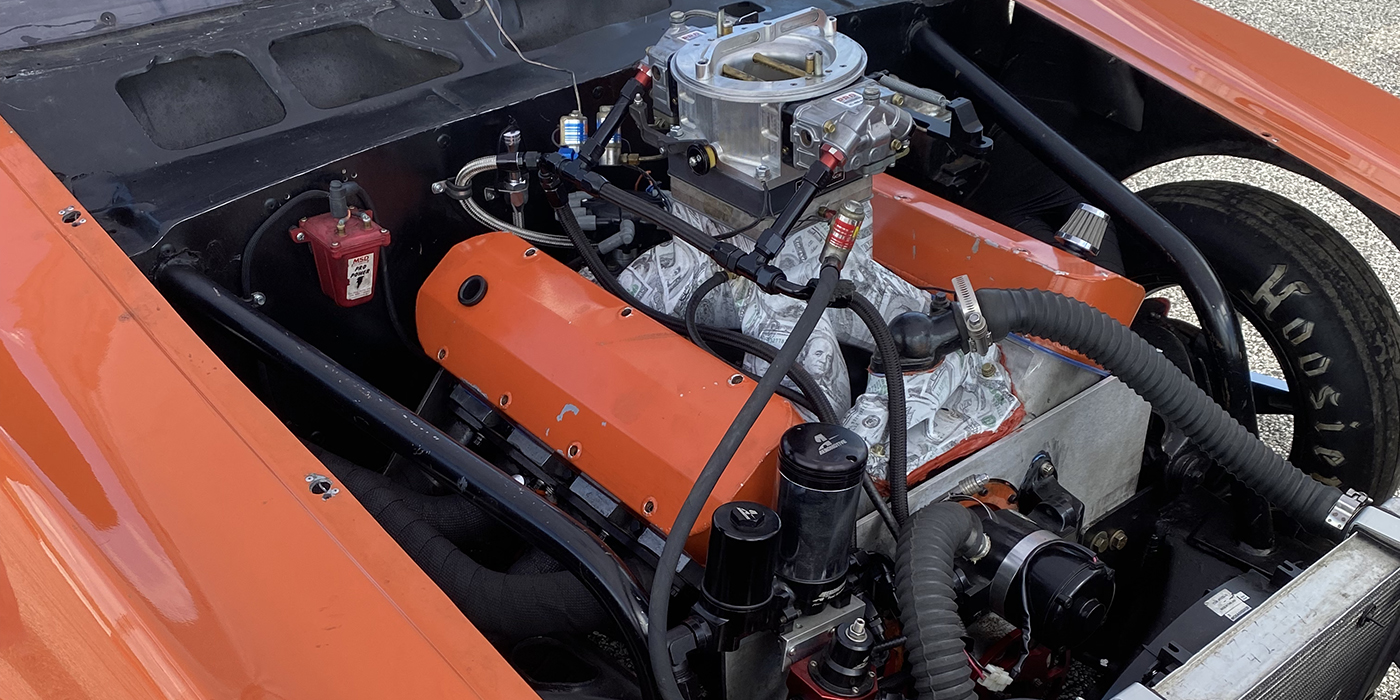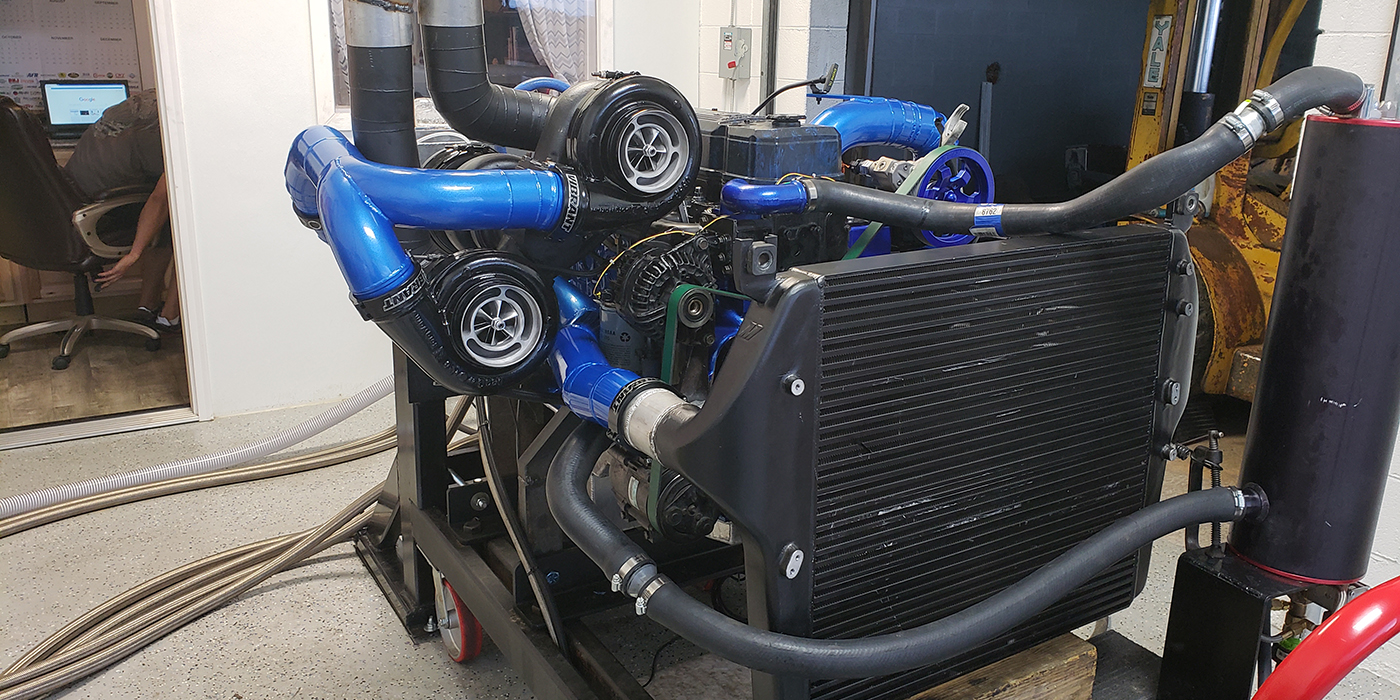On a basic level, fuel injection just looks really cool. The intake on a fuel injected power plant is the most visible part of the engine while the ram tubes, injectors and fuel lines make it look intricately sleek. With recent developments, simple mechanical fuel injection (MFI) is also useful for a level of complex control in performance applications approaching that of electronic fuel injection (EFI).
For spark ignition engine builds, both a throttle body and a fuel control circuit are needed. Fuel injection controls the air and fuel amounts as well as the air to fuel ratio.
Fuel injection in normally (naturally) aspirated compression ignition diesel engines is used to control the fuel amount only. The air is commonly not modulated except for compression braking, if so equipped.
Electronic Fuel
Injection (EFI)
EFI setups for spark ignition engines control air and fuel amounts. Fuel control is by throttle body, port, or direct cylinder injection. EFI is common from engine builders on OEM engine modifications or rebuilds, and many crate engine modifications or rebuilds. Additionally, engine builders can use aftermarket EFI kits for transportation as well as racing applications.
EFI is expanding into alcohol fuel applications. These require corrosion-inhibitive materials throughout and larger components for increased fuel volumes. Ethanol volume is approximately 1.5 times that of gasoline for a given power level, and methanol volume is approximately twice that of gasoline.
EFI can be operated in open loop or closed loop. In open loop, EFI does not compensate for changes in air density. Reprogramming the controller is needed to tune for weather or altitude. In closed loop, EFI automatically regulates the air to fuel ratio with a specialty controller for air density changes. Initial setup requires a special programmer.
EFI can be more complex with several components: throttle control, multiple sensors, fuel pump, regulated fuel return circuit, electronic injectors, controller, and programmer. Electronic injectors in higher power applications require special high current power supplies over the more common low current OEM power supplies. In some high horsepower applications, fuel pressures need to be regulated from low volume, idle mode to high volume, full power mode.
Timed Mechanical Fuel Injection (MFI)
Mechanical fuel injection controls both air and fuel. Timed MFI from Bosch is common in older OEM gasoline engines from Europe such as Porsche and Mercedes. Recently, road-racing applications used timed MFI from Lucas / Kinsler with both air control with a throttle, and fuel control with a unique hydraulic system. Fuel flow is timed to the inlet cycle of each cylinder. Timed MFI is engineered for specific highway and racing applications, and special fuel curve tailoring is needed.
Timed MFI is also common from various manufacturers for older compression ignition diesel engine builds. Newer diesels for the highway use EFI and are quite complex with government restrictions to modifications and usage as well.
Constant Flow Mechanical Fuel Injection (MFI)
In older OEM engine setups – from GM Rochester and from Bosch – special MFI systems with load sensing fuel control features were used to provide good idle, mid and full throttle fuel regulation as well as good cold starting provisions.
Constant flow MFI systems common in racing are not used in very many highway applications due to part throttle fuel control limitations. These systems use simple fuel circuits without load sensing for part throttle operating modes.
Simple constant flow MFI for auto and boat racing is common in engine builds all over the world: drag, sprint, top speed, and tractor pulling. Popular manufacturers are Kinsler, Hilborn, Enderle, Engler, Rons and Belmit. Used systems from Crower, Pete Jackson, and Algon occasionally appear on nostalgia engine builds. For racing, constant flow MFI is used most often from ‘off-throttle’ idle to ‘full-throttle’ full power with little ‘mid-throttle’ moderate power demands.
In Sprint Car racing on short courses, however, limited mid-throttle fuel control is necessary where the driver modulates the throttle around tight turns and through traffic. This is done with a simple secondary fuel bypass circuit. Engler fuel injection developed an added stumble valve circuit as well. These mid-throttle circuits are only approximate fuel modulation devices. They work primarily with alcohol fuels that do not foul spark plugs from enrichment surges that occur with these simple systems.
Constant flow MFI systems include a throttle body for air control and a simple fuel control setup with a fuel pump, barrel valve, nozzles, and fuel bypass circuit. Most components are low cost and can be installed and rebuilt by an engine builder with limited knowledge or tools. However, setup and tuning experience is important to dial in a new MFI engine build.
Hidden Advantages
With MFI
Recently, in the development of a high output 4-cylinder midget racecar engine, MFI made more power than racing carburetors or EFI. In another application, in the development of a 6-cylinder 2-cycle marine engine, MFI made more power than racing carburetors. MFI is not limited by an inlet restriction from the venturi’s needed in carburetors.
MFI engine builds can be set up with higher fuel pressures than those in common port injection EFI. Higher fuel pressure can increase power and throttle response from good fuel atomization. Higher fuel nozzle velocity occurs from higher fuel pressure. Higher nozzle fuel velocity can also be used to steer the air intake in the ports for a better CFM fill. It can accelerate the air in the intake tract and increase power.
MFI has an advantage in power over direct injection EFI gasoline applications in some cases. In direct injection, the air intake is limited to the dry airflow characteristics of the inlet with no vaporization cooling or condensation to increase power such as in wet intake systems. Engine builds using alcohol fuels especially benefit from inlet vaporization cooling and condensation.
Advantages of
Direct Injection
Direct injection applications used for spark ignition engines can inject the fuel directly into the cylinder. With no boundary layer of fuel on a cold inlet port surface, the inlet is dry. This is an advantage in applications with emission and economy needs.
Problems from Direct Injection
Direct injection setups use complex components to regulate very high fuel pressures, often in excess of 2,000 psi. In setups with exhaust gas recirculation (EGR), inlet valve contamination can be a consequence from the absence of inlet fuel to wash the intake valves clean. In some direct injection highway OEM engines with EGR, warrantee problems are reported from dirty valves in 30,000 miles.
Some direct injection setups may have reduced power over port injection from the lack of dwell time between the air and fuel. Air to fuel dwell time in port injection setups increases fuel vaporization and power.
Is your MFI-related business suffering from too much customer service demand?
Customer support for MFI engine tuning is often a needed service provided by MFI engine builders. However, frequent customer inquiries are reported by many mechanical fuel injection manufacturers and engine builders to be very time consuming. ν
—
Bob Szabo is a welding engineer as well as owner, writer and publisher for Racecarbook.com. His website publishes various racing engine technical manuals useful for the engine builder, as well as the customer to help relieve the engine builder’s customer service burden. Subjects include mechanical fuel injection for racing, alcohol & nitro racing fuels, and tuning drag, sprint, & other racing engines.
Jennifer Szabo is the owner and developer of airdensityonline.com. This web site, accessible through a smart phone or web device, provides current air density information including air density, grains of water, and air density forecasts for hundreds of racing facilities around the world where fuel injection is used.













